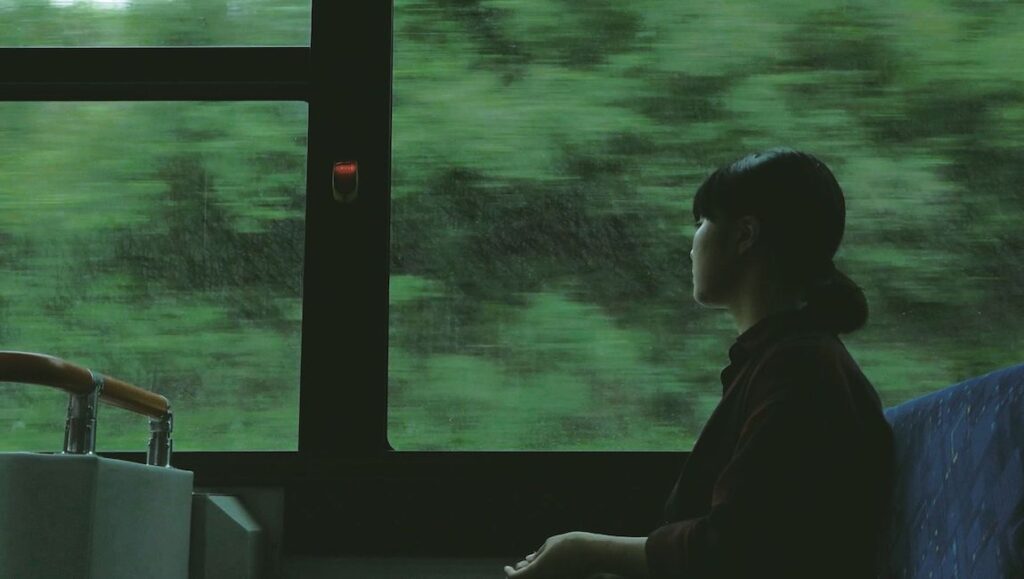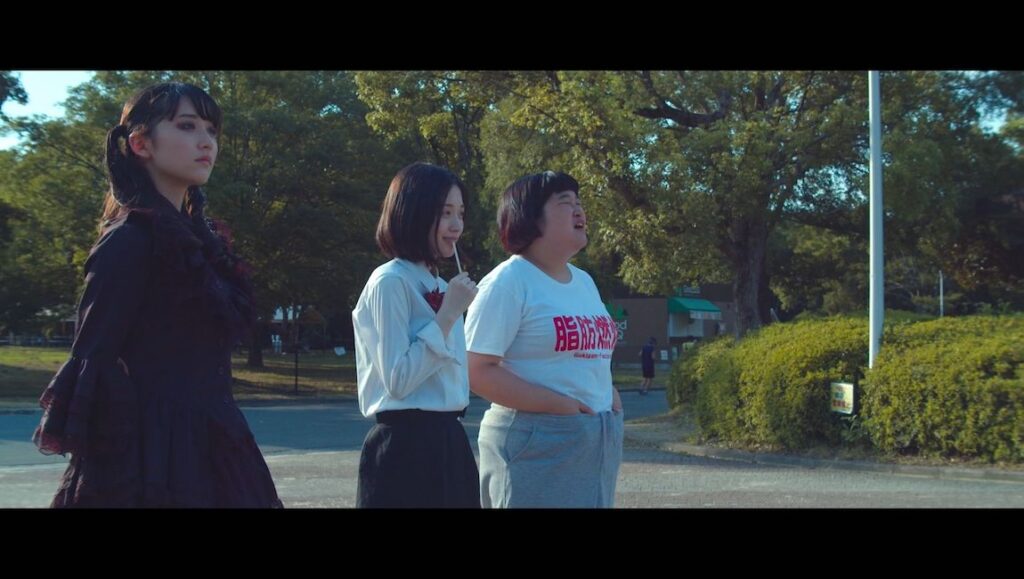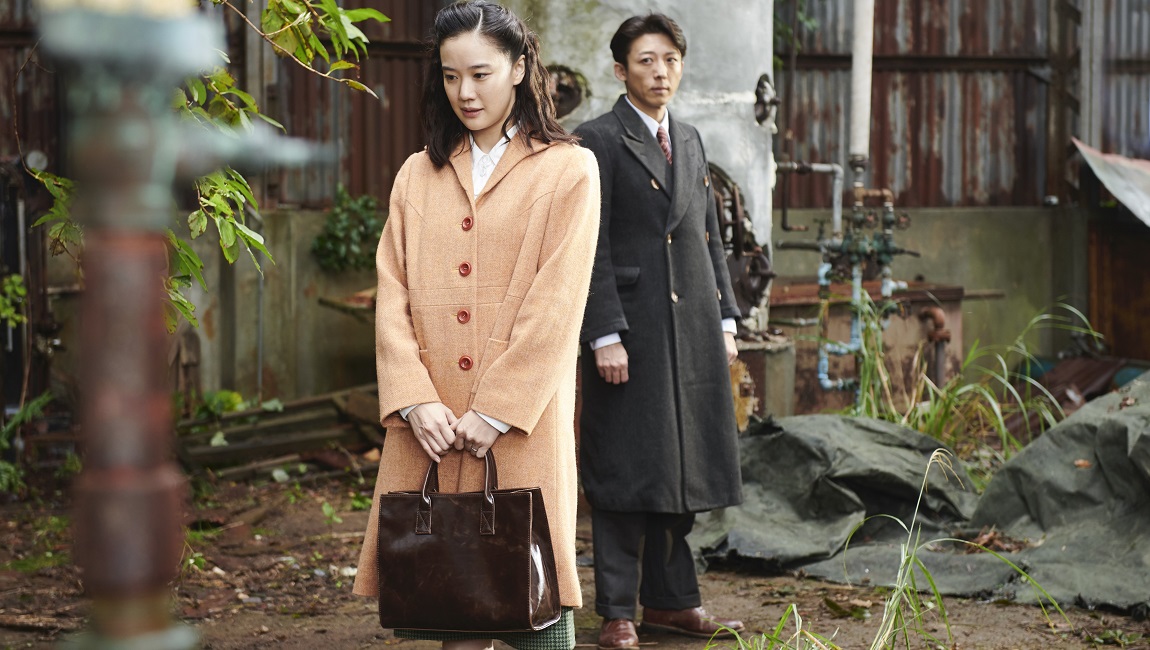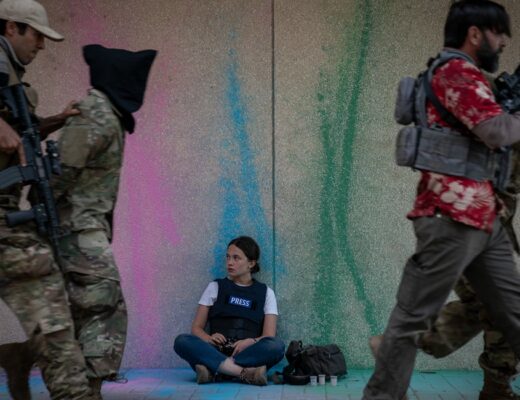Wife of a Spy
Though over three decades into his varied, distinctive career, American critics have only really paid Kiyoshi Kurosawa intermittent attention, almost exclusively recognizing him for his contributions to J-horror, with 1997’s Cure and 2001’s Pulse eating up the majority of their attention. Kurosawa has directed a considerable amount more since, with at least 12 feature length credits in between Pulse and 2019’s comparatively grounded drama To the Ends of the Earth, a departure from his recent streak of genre work that brought him some of the broadest acclaim he’d received stateside in many years. Nevertheless, this newfound momentum is entirely deserved, To The Ends of the Earth representing something of a switch up, but with no real resulting loss in quality (albeit, not superior to 2016 serial killer thriller Creepy or 2017’s dark sci-fi allegory Before We Vanish). This has generally been the case for Kurosawa over the last decade, his output rapid, but without notable misstep even as he moves between the supernatural and the mundane.
Continuing on down To The Ends of the Earth’s path away from the former, Kurosawa’s latest film, 2020 Silver Lion winner Wife of a Spy, brims with more of the sensational excitement of its period espionage territory, though still working through much of the same emotional spectrum and thematic material that characterizes his previous movies. A rare excursion into the past for the fairly modern director (previously attempted with Tony Leung vehicle 1905 in 2013, but that film’s production was shut down early on), Wife of a Spy’s action occurs in 1940 as Japan is ramping up to enter WWII, the fascist government policing and surveilling its citizenry with an increased vigor. Taking place in Kobe, the script (penned by Kurosawa alongside Ryûsuke Hamaguchi and his Happy Hour co-writer Tadashi Nohara) centers on the triangular relationship shared between Satoko Fukuhara (Yū Aoi), her international businessman husband Yūsaku (Takahashi Issey), and her childhood friend Taiji (Masahiro Higashide), who serves as military police in adulthood. From this dynamic and turbulent historical backdrop, Kurosawa sets in motion an uneasy melodrama pitting romantic and political passion against each other, while working off of the tropes of the spy thriller to conjure a sense of destabilizing dread parallel to that which characterizes his horror films (or perhaps another angle to look at his domestic drama Tokyo Sonata from.)
A fictionalized narrative based on historical fact, Wife of a Spy primarily sits with Satoko’s perspective as she comes to realize that Yūsaku has been quietly undertaking righteous, traitorous action against the Japanese government in response to his discovery of brutal war crimes and illegal, torturous experiments being carried out against the Chinese prisoners held captive in Manchuria. In possession of a roll of 16mm film containing definitive evidence of these crimes, Yūsaku aims to escape to America intent on exposing the Japanese government. An obviously noble motive, the screenplay insists on rendering it fraught, keeping the audience at Satoko’s side, slowly losing sight of the distinction between truth and deception, her agency always in a state of flux. While convincingly dwelling in the past thanks to attentive costume design and well-chosen locations (plus crisp, stately 8K cinematography made possible by Japan’s NHK broadcasting conglomerate), Wife of a Spy is, of course, a film conceived with present dilemmas in mind: both the general sense of uncertainty and insecurity that comes with living in a fascist state, and then the challenging question of how to upend it and at what cost. Kurosawa and Hamaguchi’s screenplay takes its time getting to its monumental conclusion (staggered across a couple time jumps acting as epilogues; a familiar structural choice for the director), but once it lands, the film’s more reserved stretches are reinvigorated in hindsight, with the narrative revealing itself to be practically cyclical — history repeating itself, etc. In this way, Wife of a Spy achieves a tone uniquely Kurosawa’s, something in between despair for our current moment and cautious optimism for where we might be able to go next.
Writer: M.G. Mailloux

Credit: IFFR
Aristocrats
Sode Yukiko has no qualms with announcing her Aristocrats as a literary project, unveiling its status as an adaptation of the novel Ano Ko wa Kizoku by Mariko Yamauchi before any credits, and even the title card. Its novelistic sweep is modest, but still manages to follow different divergences, whether in the form of flashback or in its endless supply of secondary characters. Opening with a reliable contrast between romantic malaise and holiday cheer — Hanako (Mugi Kadowaki) must confess to her family that she’s split with her fiancé when his absence at their New Year’s dinner is remarked upon — Sode probes the mannered methods in which personal desires are flouted by family as means of preserving an external decorum. Hanako must quietly weather pleas for a speedy arranged marriage at the behest of her parents, while still being chided by her otherwise more progressive siblings for holding out for what she calls “a normal guy.” The prosaic conversation is buoyed by cinematographer Yasayuki Sasaki’s precise framing, offering numerous instances of physical distance between Hanako and those around her.
The rush to find a suitable partner cycles through a handful of disastrous blind dates and meetups with prospective husbands, but mapping the contemporary playing field isn’t Aristocrats’ sole ambition. Hanako’s too-good-to-be-true, brisk slide into engagement with the well-off Koichiro (Kengo Kora) meets its inevitable compromising element in Miki (Kiko Mizuhara), a former amorous classmate of the latter. Miki is no antagonist, but another facet of Sode’s surveying of class in contemporary Tokyo. The relationship between the two ex-students is chronicled through a flashback that also outlines the economic straits of Miki’s own family, forcing her to drop out of college and become a hostess in the city. An ostensible love-triangle is established, but Sode drifts from matters of the heart to focus on the platonic relationships that the two women develop with one another, also absorbing their respective friends into this portrait of tryingly resounding sympathy.
Too often, though, does Sode strand her characters amidst the didactic — at one point, at lunch with friends from school, Miki’s friend leans over to whisper, “they’re aristocrats,” in regards to their dining partners who are unfazed by the menu prices. Conversations mostly circle topics of upbringing, “the sticks” (as referred to by Miki), and the ways in which romantic possibility in Tokyo is now “compartmentalized” (according to a friend of Hanako’s). This, paired with a relative shapelessness — shifts in perspective that aren’t necessarily jarring, but unceremonious nonetheless — makes Aristocrats an unfortunately toothless endeavor. Required forays into the acerbic, which the material demands, are relegated to the occasionally witty subheading of a chapter card, such as “Chapter One: Tokyo (in particular, one class of people).” Sode herself appears to be perfectly content with Aristocrats’ noncommittal writing, which admittedly produces a fitfully lulling effect, although such an anodyne lilt isn’t what the film itself strives for.
Writer: Patrick Preziosi
The Pass: Last Days of the Samurai
The end of the Edo period in Japan in 1867 was basically the end of the samurai era, and has, accordingly, been the inspiration for countless films. The Pass: Last Days of the Samurai focuses in particular on events during the Boshin War that followed the next year, and while it doesn’t do much to shake up a familiar tale or a familiar style, its patience and performances make it more than engrossing to behold.
After a somewhat daunting narration explaining the military and political situation at the time, we’re introduced to Kawai Tsugunosuke (Kōji Yakusho), chief retainer in the Nagaoka province, who finds himself caught between the rock and hard place of two warring factions, essentially unable to choose a side due to the demands of loyalty both to his samurai code and to his lord. Though he favors the country’s adoption of Imperial law, his master is loyal to the collapsing shogunate. He fears another armed conflict would be a catastrophe, but after his petitions for peace to both sides are essentially dismissed, he readies for war.
The film is essentially split into two parts, with the first half belonging to a scrutiny of Kawai and his general strength of character and charisma. He’s a thoughtful, generous man, gentle and affectionate with his wife, encouraging a younger vassal to pursue a career as an artist, and so forth. Koji’s performance is, as is the style of such a film, unfussy and even a bit placid, but the stoicism is baked right into the character such that when Kawai is seen at leisure, it’s a genuine delight to watch him loosen up. The second half is dominated by training and combat, and director Takashi Koizumi — who incidentally was an assistant director on Kurosawa’s legendary Ran — keeps things economical without sacrificing scope. It’s clear that he’s also paying a bit of homage to the maestro, with long static wide shots of armies in battle, and of course the occasional wipe just for fun. With Kawai going down in history as a martyr, you know how it’s all going to play out, but a satisfying jidai-geki like this one doesn’t need to do much more than play the hits. Inessential but satisfyingly epic and with appropriate doses of pathos and gentle philosophy, The Pass gets the job done.
Writer: Matt Lynch

Credit: Japan Cuts
Double Layered Town/Making a Song to Replace Our Position
Filmmakers Haruka Komori and Natsumi Seo interpret the title of their new essayistic documentary Double Layered Town/Making a Song to Replace Our Position very literally; a decade after the great earthquake of 2011 that rocked Japan (and which was directly responsible for the Fukushima nuclear disaster), the directors traveled to the town of Rikuzentakata, Iwate Prefecture, which was completely destroyed by a tsunami following the initial quake. A new city is now being built on top of the detritus of the old one, using the latter as a foundation for its modern urban center. This new city has been raised 40 feet higher than before, including a new sea wall and an intricate system of buttresses; as one person notes, absolutely nothing is the same except “the sky and the ocean”. Komori and Seo proceed to establish a workshop comprising four young adults who were children during the disaster, having them interview city residents about their memories of that epochal event. The workshop members then relay these different tales directly to the camera, seated in front of a plain, black backdrop and in medium close-up, not unlike subjects of portraiture. Interspersed with these talking head interviews is footage of the city being (re)built, replete with skeletal frames of in-progress buildings, construction equipment, and sprawling freeways stretching across the horizon line as far as the eye can see. The film also features a multitude of voiceover narration tracks, as we hear a short story (written by Seo) read aloud about a hypothetical version of Rikuzentakata in the year 2031.
It’s a fascinating, if occasionally dry, project, functioning almost like an academic exercise. The stories themselves run the gamut from bemused indifference — at least one person admits that the disaster barely affected them, that they don’t think about it much — to a heart-rending tale of a public servant forced to leave a woman to drown in order to save a car full of other people. Komori and Seo conflate different modes of contemporary non-fiction filmmaking in their project, aspiring towards something along the lines of Kiarostami or, especially, Jia Zhangke, probably contemporary cinema’s most celebrated surveyor of the shifting landscapes of modernity, both literal and metaphoric. Indeed, Double Layer Town would not be out of place as an addendum to Jia’s 24 City. But the emotions here are decidedly hypothetical, as the distancing effect created by the film’s structure tends to flatten every anecdote into the same monotone register. To the filmmakers’ credit, they dedicate the end of the film to exploring the practical and ethical issues of having the workshop participants relating other people’s oral history, largely settling on the idea that this kind of purposeful distancing effect accords traumatized people the space to honestly relay their stories. Whatever the case, the film is a good-faith effort to record the recent past for posterity’s sake, and to keep alive in one form or another these individual stories. If it’s lacking a certain emotional honesty, it at least makes up for it in formal rigor.
Writer: Daniel Gorman
It’s A Summer Film!
Given our TikTok-conditioned attention spans, it’s not hard to imagine a future where movies are eventually whittled down to a mere 5 seconds, with minute-long blockbusters considered a landmark achievement. In Soushi Matsumoto’s It’s a Summer Film!, the petite, tomboyish Barefoot (singer and former pop idol Marika Ito), a samurai film-obsessed teenager, confronts this horrifying possibility while filming her own homage to chanbara cinema, Samurai Spring, over the course of an action-packed summer. Disgruntled by her school film club’s decision to showcase the mean girl’s hackneyed rom-com, Barefoot (the Japanese translation, hadashi, also means “superior to”) enlists a suitably ragtag group of friends and classmates as her cast and crew, including kendo star Blue Hawaii (Kirara Inori) and astronomy geek Kickboard (Yumi Kawai).
Her star, Rintaro (Daichi Kaneko), is a pretty boy who wears the same clothes every day and has never heard of Netflix. Nonetheless, he and Barefoot bond over their mutual love of samurai films, especially the 1962 classic The Tale of Zatoichi. Matsumoto inserts numerous clues pertaining to Rintaro’s origin story — for instance, why does he address Barefoot as “Director” before he’s asked to star in her film? — before spilling the beans. Rintaro is from the future, where Barefoot is a respected filmmaker, and has traveled back in time to watch her lost debut feature, Samurai Spring. “I never thought I’d be in it,” he says sheepishly.
For Barefoot, who learned to love samurai films through her grandmother, “movies connect the present with the past.” Filmmaking, she professes, is a way to connect with the future, and the prospect of a future without feature-length films shakes her to her core. But it doesn’t undermine her commitment to Samurai Spring. It’s a Summer Film!’s 137-minute runtime is mostly concerned with highlighting the crew’s DIY chops and dedicated work ethic, contrasting their bare-bones manpower and unbridled artistic vision with their rival’s well-funded but generic production.
In addition to being a sci-fi film and a loving homage to samurai cinema, It’s a Summer Film! is at heart a fairly standard teen comedy. Most of the background characters are played for comic relief, the pacing is fast and the music zippy (if occasionally schmaltzy), and adults rarely appear on screen. Matsumoto, who co-wrote the script, makes sure all the major characters have their moment to shine and ties up the whole thing at the long-awaited screening. It’s a Summer Film!’s time-travel plotline may be a little muddled, but it doesn’t bog down its characters’ aw-shucks earnestness and cinema-loving charm.
Writer: Selina Lee

Credit: Japan Cuts
B/B
In Johnnie To’s 2007 film Mad Detective, the eponymous cop is a gifted but troubled investigator who “sees” people’s inner personalities, which To visualizes by having multiple actors of different ages and sex playing the same person. Kosuke Nakahama lifts this conceit wholesale for his film B/B, in which a young woman, Sana (Karen), suffers from multiple personality disorder and is in constant conversation with up to six other people at any given moment (as she explains, she has 12 personalities but can only see six at any given moment, a limitation of the human mind). She’s being interrogated by a police officer while in her shrink’s office; a store clerk has been murdered, and Sana has been seen in the company of the victim’s grade school aged son, Shiro. The officer wants to know what exactly the nature of the relationship is between this young woman and the little boy, while the doctor is there to navigate and interpret Sana’s various personalities. B/B is a small film, in the sense that much of it transpires entirely in the doctor’s office. Nakahama inserts brief flashbacks that show the burgeoning friendship between Sana and Shiro as they meet in parks around the city on a daily basis, while Sana’s personalities goof around, bicker, or otherwise comment on what they are witnessing. It’s never particularly funny or charming, and despite an aggressive, no-holds barred performance from newcomer Karen (no surname), much of the film lands with a thud.
Nakahama overcompensates for the limited scope of his narrative with a heaping pile of ostentatious style, cutting rapidly from disparate angles and moving the camera wildly about. It occasionally works itself into an almost pleasantly rat-a-tat rhythm, but feels arbitrary just as frequently; there’s no visual schema here, just a throw-it-at-the-wall-and-see-what-sticks sense of disarray. Perhaps more egregious is the film’s sudden transformation into an after-school special, as Sana and Shiro share a particularly traumatic history of neglect and abuse. It doesn’t take long to figure out where the film is going, and there’s nothing else to grab onto once the narrative starts spinning its wheels. Nakahama has a few good visual ideas; one scene finds the various personalities having a board meeting to decide what to do about Shiro’s father, and once the decision has been made, a new, darker personality is introduced like some sort of avenging angel. But by the time Sana stares directly into the camera, blaming society — and by extension the audience — for neglecting abused children, you’ll probably just be ready for her to shut the fuck up.
Writer: Daniel Gorman







